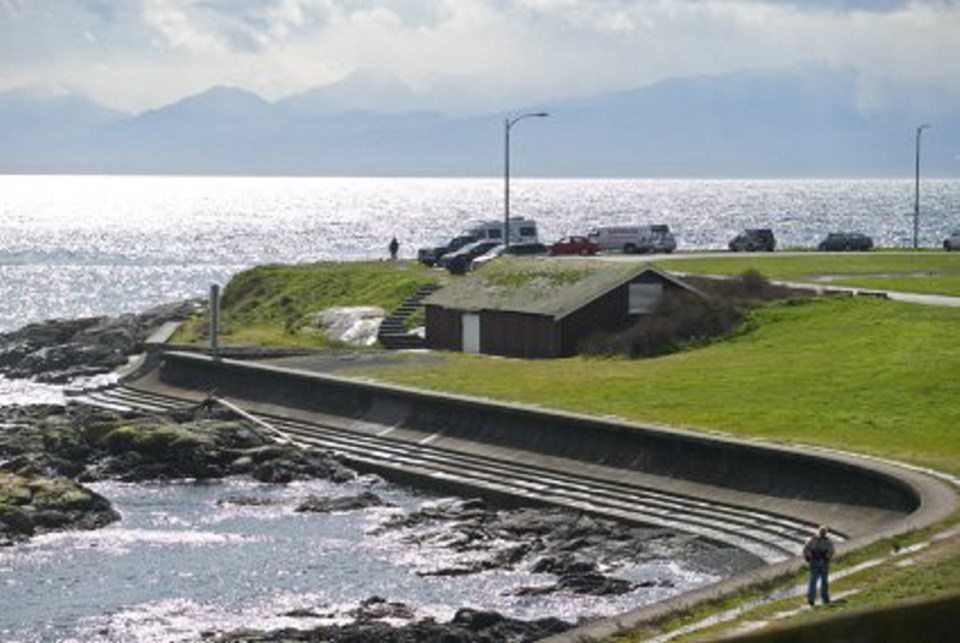Victorians will get their first chance Monday to weigh in on the plan to bury a sewage-treatment plant under the park at Clover Point.
A public meeting, planned for the Crystal Garden, is being billed as an opportunity to talk about guidelines in siting sewage-treatment plants in general.
But with the Capital Regional District’s preferred option being a treatment plant at Clover Point, Mayor Lisa Helps has little doubt that it will be the focus of much of the discussion.
“This is the first opportunity for the City of Victoria to discuss this issue with our residents. So there will be a lot of focus on Clover Point, because people will be coming to talk about that,” Helps said. “We expect that, and that’s fine.”
But, she noted, the plan could change. Some Fairfield residents who are opposed to Clover Point would be OK with a site nearby, Helps said. And a site in Rock Bay, just to the north of downtown, is still under consideration.
In 2014, the CRD abandoned a plan that was estimated to cost $788 million for a single regional plant at McLoughlin Point because Esquimalt wouldn’t approve minor zoning variances.
The CRD’s latest sewage-treatment plan calls for plants to be built at Clover Point and either McLoughlin Point or Macaulay Point in Esquimalt. It has asked the two municipalities to consult residents about the areas’ suitability.
The current two-plant option is estimated at $1.13 billion.
Helps, who chairs the CRD’s sewage committee, said it’s all but certain a treatment plant will be built somewhere in Victoria, and Monday’s meeting is part of the city’s efforts to develop guidelines that will have to be met regardless of where the site is.
“I’m open to and pretty much convinced that there will be a sewage-treatment or wastewater facility somewhere in the City of Victoria, and it needs to be on terms that are acceptable to our residents,” Helps said, adding: “I think our residents are open to locating it somewhere in the city.”
Guidelines being developed are expected to address issues such as odour, seismic issues and sea level rise, cultural significance, traffic and transportation, air quality and emissions, socioeconomic issues, architecture and urban design.
The city wants to hear what residents identify as their key issues and considerations. “What is acceptable? What are the principles? What are the setbacks? What are the design considerations?” Helps said. “So it will be a focused and a general conversation at the same timed.”
Helps said it has to be remembered that Monday’s meeting is just an introduction to a process that will be going on for several months.
Coun. Geoff Young, a Fairfield resident, said he’s somewhat unclear about council’s position on soliciting input on Clover Point.
At one point notices were sent out indicating it was a meeting about Clover Point. Then the city pulled back and is now calling it a general meeting about siting a plant, Young said.
“I can certainly understand that the public may not be entirely clear on where exactly the matter stands at the moment,” he said. “And I think we may find a little frustration being expressed at this Monday meeting with regard to where we are.”
He said sewage-treatment plant siting seems to generate the biggest reaction from immediate neighbours.
“What happens is we propose a sewage treatment plant for, say, Haro Woods, for example, or Clover Point or Vic West’s Banfield Park, and we immediately find that a number of people who happen to live there immediately start expressing the view that we don’t need sewage treatment,” he said. “So people tend to react to specifics rather than generalities.”



